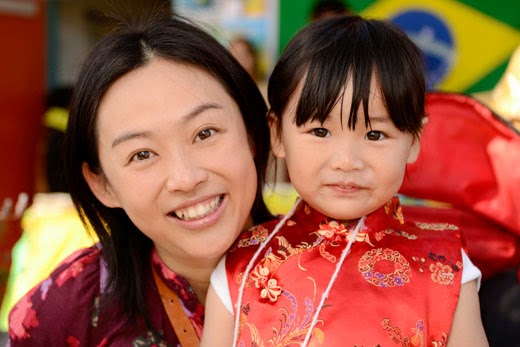 |
| Photo #1 |
International Day at the San Mateo Adult School is a big event. Normally, students are grouped by ability, but for this event, students form planning groups based on their countries of origin. Along with cultural displays and an international buffet of food from around the world, there is a program of traditional songs and dances. For a photographer, it's a target rich environment, with many opportunities to experiment with different lighting techniques. I had Cissie to assist me, so she became my "Voice Actuated Lightstand". This gave me the freedom to position my light wherever I wanted, within reason.
I used a single Nikon SB-800 as a light source, but added an SD-8 supplementary battery pack modified to work with the SB-800 and SB-900 speedlights. This gave me a shorter recycle time, a helpful addition when multiple shots are necessary. For Photo #1, #2, and #3 I used a Lastolite 15" EZBox on the end of a paint pole. I rotated the SB-800 so the sensor cell faced to the rear. So long as the camera was slightly behind the EZbox, I could easily maintain line-of-site communication between the on-camera commander and the remote SB-800. In Photo #1, the EZBox is held just above the camera. You can see that the lighting on background is mixed: While most is in the shadow, there is a yellow "hot spot" created by direct sunlight. You can tell the subject is completely in shadow by the absence of highlights in her hair.
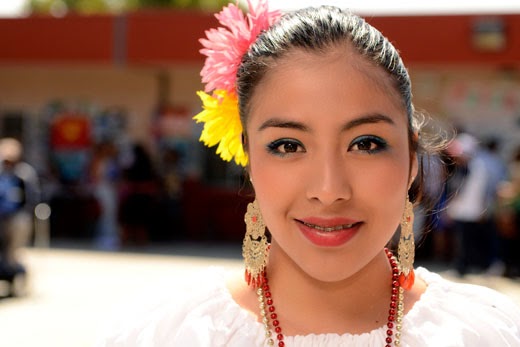 |
| Photo #2 |
The subject in Photo #2 was standing with her back to the late morning sun.The sunlight was strong enough to provide highlights for the hair but from an angle low enough to not light any portion of her face. The background exposure was an average of the darker shadow regions and the reflect light from the concrete sidewalk. My personal takeaway is a reminder to carefully check the subject in the LCD before moving on. Had I done this, I might have noticed that the top of her head gets a little lost in the background sky. It would have been very easy to have my subject take a few steps backward, had I noticed the problem earlier.
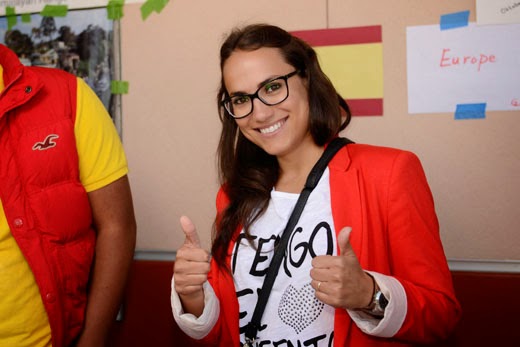 |
| Photo #3 |
Photo #3 was a simple shot with the subject and the background completely in the shade. Not particularly interesting, but a good record of an enthusiastic guest at the party.
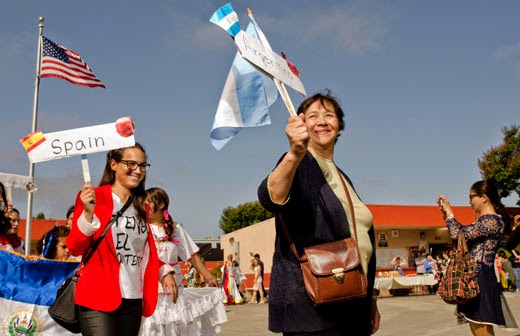 |
| Photo #4 |
Photos #4 and #5 were pretty much "light on a stick" photos. They were made with using direct flash (no modifier) triggered by a no-name radio flash trigger. This setup was originally for a digital camera that didn't support Nikon's iTTL (intelligent Through The Lens) flash metering, but at the last minute it was used on a Nikon DSLR. Here, the speedlight provided some fill light for the shadows. Flash output was set manually, but I don't remember to what level. I often set the output manually when my light-to-subject distance remains fairly constant or when there is a chance that a light colored background like the sky might confuse the iTTL metering.
If you look closely at the Photo #4, you'll see the shadow cast by the flash beneath the subject's chin. I suspect that these shadows are only annoying to people like myself, but the elevated position of the flash prevents over exposure of the subject's lower body, something I'd find much more troubling that the double shadow.
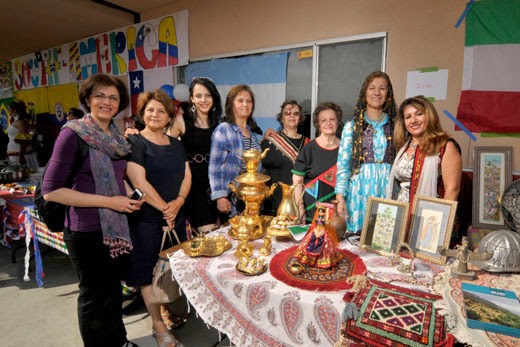 |
| Photo #5 |
Photo #5 demonstrates how much one can get from a single speedlight, providing you have a wide-angle lens on your camera. The short working distances for the camera and the flash can give you access to small apertures to keep your shutter speed within the limits set by your maximum synchronization speed. The brightness levels of the shadows and the highlights are very close.
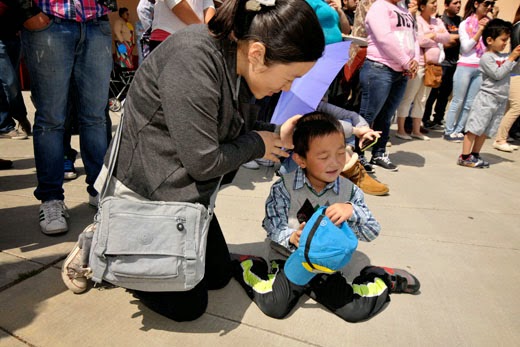 |
| Photo #6 |
|
On camera flash fill still has a place (Photo #6). If you're using a wide angle lens and can keep the subject's plane of interest parallel to the sensor, you can minimize distortion at the corners. It also helps to keep the subjects as close to the center of the image as possible. Remember that the fill light from your flash adds to the existing fill from the concrete, so one wouldn't want to overdo it. In this case, the fill is so subtle that you might not notice it. But if you examine the boy's jawline, you can see from the relative brightness of the shadow that there is a fair mount of ambient fill light coming from below. As with all things, don't overdo it.





